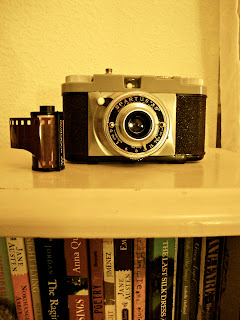Nowadays, it seems everyone has an issue, some physiological damage and an excuse to visit the shrink. At least, it seems this way in the world of television.
 |
| "Extreme couponer" digging through the trash for coupons |
Last night, I watched the premiere of TLC’s new show “My Strange Addiction.” The hour-long segment accounted the oddities of certain fixations that have taken over people’s lives. Among them: a toilet paper-eating addict, a woman who slept with a hairdryer, and a man who treated bargain shopping like a game of chess.
“Shopping is like chess. You’re trying to beat the opponent, which is the store,” he said, as he accounted his bizarre fascination for coupon clipping and stockpiling food.
The show featured two other women who also called couponing their “passion.” Really? While clipping coupons may be realistic on a small scale, I interpret their mass-stockpiling behavior as downright cheating the stores of their products. Basically, these people are “stealing” hundreds of soda bottles, candy bars, and toilet paper rolls off the shelves. It is one thing to clip coupons from the newspaper in order to save some extra money, but it is another to dedicate 70 hours a week to scouring the Internet for coupons, as one of the women featured did.
It is also selfish to fill 8 carts worth of food, health and beauty products (a value of over $600) and pay less than $10. No couple needs a thousand boxes of pasta in their house, do they? Not to mention, who wants to unload all of those groceries? I get sick of unloading ONE cart full.
This particular obsession relates to another show on TLC called “Buried Alive,” which features people’s hoarding issues. One of the men featured on “My Strange Addiction” had accumulated enough deodorant to last the average person longer than a lifetime. This is a sign of unnecessary hoarding if you ask me. Sure, there are deep psychological issues involved here, but part of me thinks that these people never had anyone smack them into the reality of reality. Friends, spouses and parents put up with their issues for far too long, so they keep spinning in a downward spiral. This, to me, is deeply sad.
In the meantime, shows like these on TLC are successful, because they are entertaining. There is nothing Americans like more than watching other Americans’
unusual, comical—and often shocking—issues. This is why so many reality TV shows have taken over primetime.
One things for certain: if a nuclear attack or natural disaster struck our nation, these coupon-clipping, food-hoarding people would have their neighbors lining up outside their front door. One thousand packages of frozen dinners, anyone?



















.jpg)









